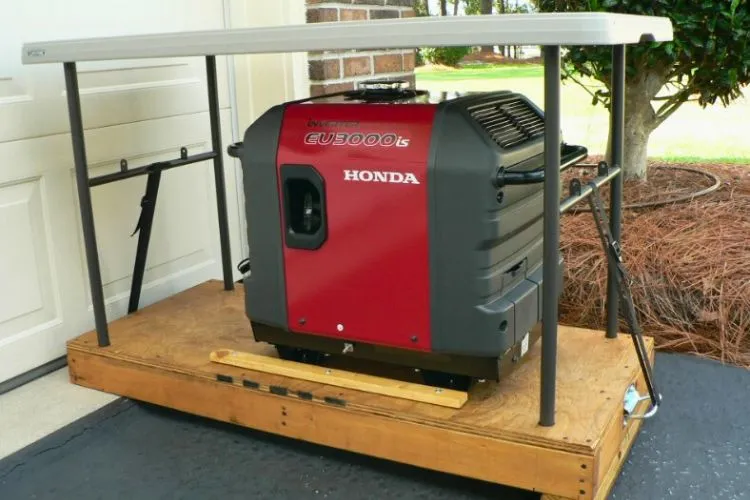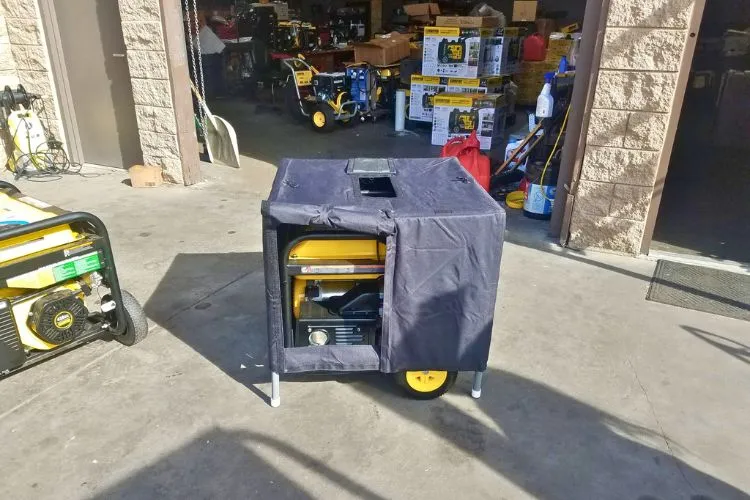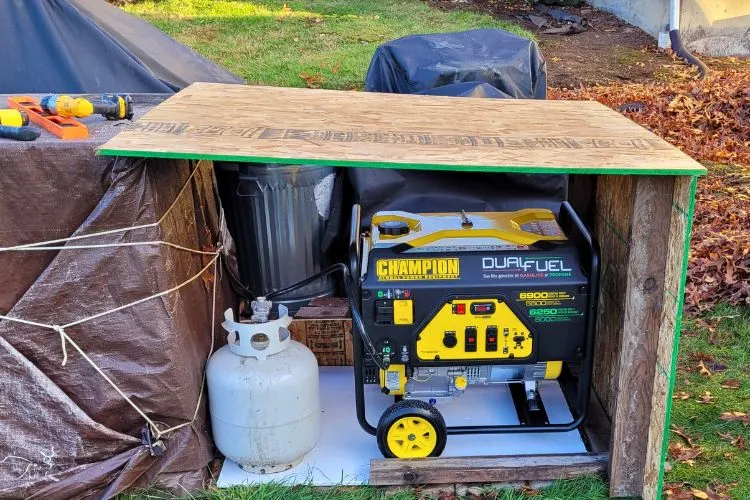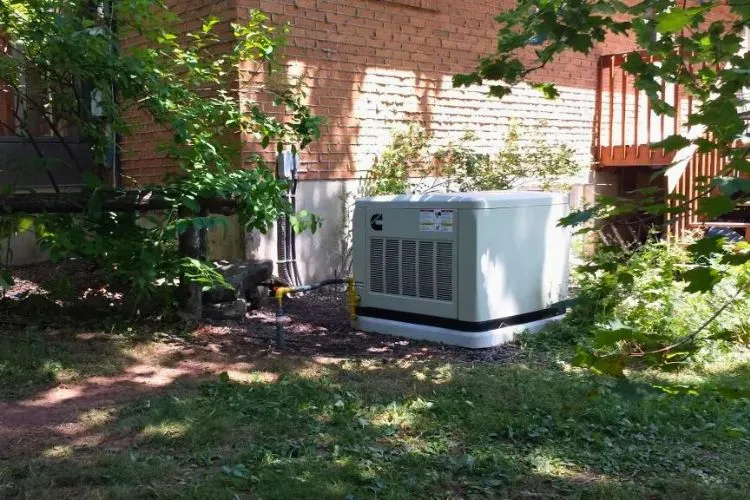Keeping your generator dry and functional during adverse weather conditions, especially rain, is crucial for ensuring uninterrupted power supply during outages.
However, operating a generator in wet conditions poses significant risks to both the equipment and the operator.
This article delves into how to cover generators in rain, ensuring it remains functional when you need it most while emphasizing safety and equipment longevity.

Understanding the Risks
Risks to Equipment
Generators are designed to convert fuel into electricity—a process that doesn’t mix well with water.
Rain can cause short-circuiting and early corrosion in the generator, leading to significant damage and potentially costly repairs.
Moisture entering the generator can degrade its components, reducing its efficiency and lifespan.

Risks to Safety
The combination of electricity and water creates a dangerous risk of electrocution.
Furthermore, wet conditions can increase the risk of fire if the generator’s electrical components malfunction.
These safety hazards underline the importance of keeping the generator dry at all times.
Preparing for Wet Weather
Advance preparation can significantly mitigate the risks associated with operating a generator in the rain.
Regularly check weather forecasts and identify a safe, covered location for your generator well before bad weather strikes.
This proactive approach not only protects the generator from rain but also ensures it’s ready to use when needed.
How to Cover Generators in Rain?
Commercial Enclosures
Manufacturers often offer enclosures specifically designed for generator protection. These come in various forms:
- Permanent Housing: Built from durable materials, such as metal or hard plastic, these structures offer long-term protection, safeguarding generators from rain and other elements.
- Portable Generator Covers: These are typically made from heavy-duty fabrics treated for water resistance, offering a flexible and quick solution for generator protection during unexpected rain.
When selecting a commercial enclosure, consider features like ventilation, which prevents carbon monoxide buildup, and easy access for operation and maintenance.
DIY Covers
For those who prefer a custom solution or need something in a pinch, a DIY cover can be effective. Important considerations for a DIY cover include:
- Using water-resistant materials that provide ample protection from the rain.
- Ensuring the cover allows for adequate ventilation to prevent overheating and carbon monoxide buildup.
- The design must not restrict access to the generator for refueling and maintenance.
Temporary Shelter
In emergency situations, a makeshift shelter can offer immediate protection from the rain. Items such as tarps supported by a sturdy frame can serve as an effective temporary shelter.
Stability and security against wind are critical in such setups to prevent the shelter from collapsing or blowing away.
Installation Tips
Setting up a commercial enclosure typically involves following the manufacturer’s instructions closely. Secure the enclosure to a stable base to prevent tipping or shifting during bad weather.

For DIY covers and temporary shelters, ensure that they are securely anchored and positioned to provide maximum coverage without obstructing airflow or access.
You may also read: How To Clean Generator Air Filter | How To Prepare Your Generator For Winter?
Safety Measures
Proper Ventilation
Generators produce carbon monoxide—a dangerous, odorless gas. Ensuring proper ventilation is critical to prevent its buildup, regardless of the weather.
This means keeping enclosures and covers designed in such a way that air can freely circulate around the generator.
Grounding the Generator
A properly grounded generator reduces the risk of electric shock. Follow the manufacturer’s instructions for grounding your generator to ensure it operates safely, especially in wet conditions.
Maintenance and Handling
Regularly inspect your protection solution for any signs of wear, tear, or water penetration. Address any issues promptly to ensure continuous protection for your generator.
After rain, always handle the generator with care, checking for any signs of water damage before operation.
Legal Considerations and Noise Control
When setting up a generator, it’s crucial to navigate the legal landscape. Local laws, zoning regulations, and homeowner association rules may have specific mandates on generator use, placement, and permissible noise levels.

Ensuring compliance can prevent legal issues and foster good relationships with neighbors.
In parallel, reducing generator noise is essential for community harmony and operator comfort.
Sound-dampening enclosures, strategic placement away from residential areas, and utilizing low-noise models are effective strategies.
Employing these measures can significantly mitigate noise pollution, making the operational environment more agreeable for everyone involved.
Choosing the Right Location for Your Generator
Selecting an optimal location for your generator hinges on balancing safety, efficiency, and performance.
A well-considered spot ensures adequate ventilation to prevent carbon monoxide buildup, minimizes noise impact for comfort, and provides easy access for maintenance and refueling.

It’s essential to place the generator on a stable, dry surface away from water ingress. The location directly influences performance; too exposed, and the unit risks weather damage; too enclosed, and it may overheat due to insufficient airflow.
Ensuring the generator is shielded from the elements while maintaining good air circulation is key to optimizing its operation and extending its lifespan.
Frequently Asked Questions (FAQs)
Can you run a generator in heavy rain?
No, it’s not safe to run a generator in heavy rain without proper protection due to the risk of electrical hazards and equipment damage.
How do you waterproof a portable generator?
Waterproofing involves using commercial covers or housing designed for generators, ensuring they are properly installed to protect the generator from rain while allowing adequate ventilation.
What are the signs of water damage in a generator?
Signs include difficulty starting, erratic operation, visible corrosion, or electrical short circuits.
Are there generators designed to be weatherproof?
Some generators are designed with weather-resistant features, but additional protection is still recommended for heavy or prolonged exposure to adverse weather.
How often should generator covers be replaced?
Inspect your cover regularly for damage or wear and replace it when it no longer provides adequate protection from the elements.
Conclusion:
Protecting your generator from the rain is vital for both safety and the longevity of your equipment.
By choosing the right enclosure, ensuring proper installation, and following safety precautions, you can ensure your generator remains a reliable source of power, even in the worst weather conditions.
